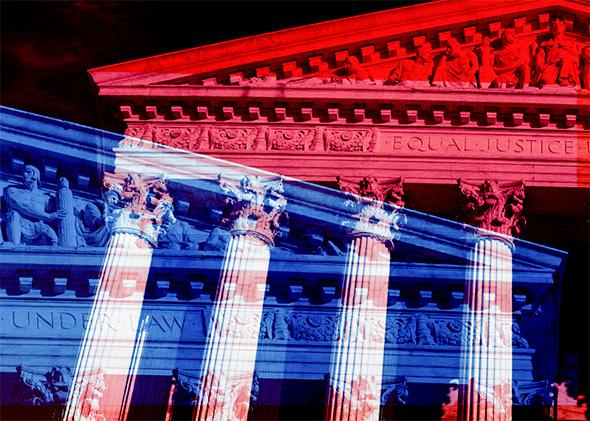Dear Walter, Judge Posner, Kenji, Marty, and Mark:
I find it extraordinary that Slate has been doing these end-of-term discussions for 14 years. In my mind, we not only more or less invented the online magazine legal discussion forum back then; we also invented breakfast! And the Internet!
I am so grateful that we will have all of you to weigh in with us, as this term closes, and also grateful to the court for managing to keep national excitement at a fever pitch right down to the wire. We should have a lot to talk about, between the health care subsidies case and marriage equality challenge—as Walter has already discussed—and also some very consequential decisions regarding lethal injection, redistricting, housing discrimination, the Armed Career Criminal Act, and the Environmental Protection Agency. (Amy Howe rounds them up for SCOTUSblog.)
I’m also wondering if anyone wants to share lingering thoughts on the speech cases that came down last week—license plates and signs—and the host of decisions from Monday, on issues ranging from raisins to Spider-Man.
Walter, your first post starts us off with an intriguing question—about whether we are poised to create an America in which blue states have health insurance exchanges and red states do not, and where blue states have marriage equality and red states do not. I would add that a look at the coming term raises the possibility that blue states will have access to abortion and red states may not, while red states have restrictive voter ID laws and blue states do not. Not to mention the slap-down over license plates (one set for red states, another for blue) that we may see in coming months. It occurs to me, Walter, that some folks have long argued that the great polarization at the court reflects a greater polarization in Congress and among the American people. (Adam Liptak speculated about this last year.) The court is only as divided as the rest of us, or better yet, we get the ideologically fractured court we deserve.
Yet certainly much of what we have seen this term is a court breaking on rather atypical ideological lines, with a general trend—as the New York Times has argued in a fascinating new infographic—toward generally more liberal outcomes than expected this term, at least in part because some of the conservative justices seem to be joining with the liberals in unexpected ways. Lots of attention to John Roberts on that front this term. Now all the usual caveats about this kind of empirical model should be urged here—there are seven cases left to go, not all cases can be weighted the same, the court has already moved the markers quite far to the right, etc. Still, these models have something to tell us about whether the court is as rigidly red-slash-blue as Walter cautions the country is poised to become, should Obergefell and Burwell go against same-sex marriage and nationwide health insurance subsidies.
In short, I wonder whether the court is accelerating a trend toward a polarized America or acting as an unexpected brake on that pattern this year. As Walter observes, we will know a lot more in the coming days.
Mostly, I join Walter in welcoming new and old(er) members of this collective. An extra breakfast muffin or Danish pastry will be winging its way toward the first among you who can work in a Marvel reference by breakfast.
Yours truly,
Dahlia
Read the previous entry, by Walter Dellinger / Read the next entry, by Mark Joseph Stern.
